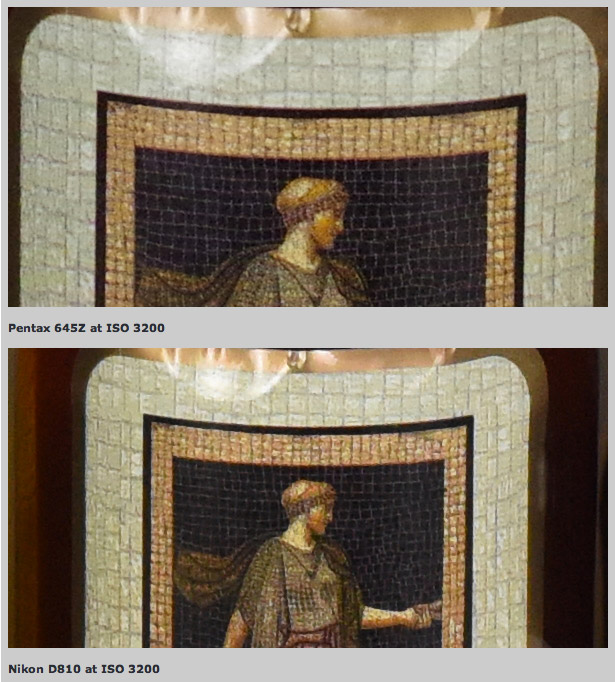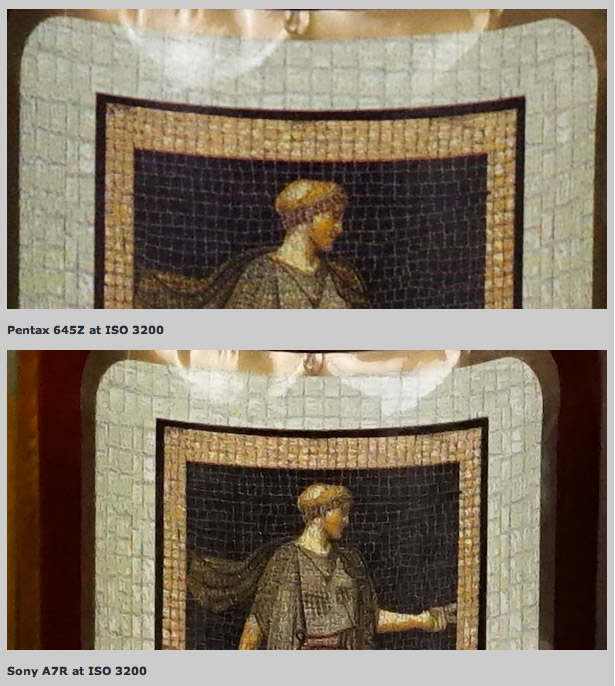Pentax 645Z Image Quality Analysis: Astronomical resolution and detail on screen and in print
posted Friday, October 10, 2014 at 2:45 PM EDT

Our coverage of the new 51MP medium-format Pentax 645Z continues with our famous image quality comparison and print quality analysis. Given its new massive 51-megapixel CMOS sensor, the 645Z is pretty much in a league of its own -- apart from other high-end medium format cameras, of course -- especially against other DSLRs and mirrorless cameras. Nevertheless, full-frame sensors are making leaps and bounds in the resolution department, and there are a few models that are testing the boundaries between 35mm full-frame cameras and medium format territory, namely, the Nikon D810 and Sony A7R, which both feature just over 36 megapixels in resolution.
Now, comparing a 51MP medium-format camera to a couple of 36MP full-frame ones may seem like an apples-to-oranges comparison, but given the level of detail and sheer resolution that these two full-frame cameras can pump out, many photographers are surely wondering if medium format is even necessary now, or is the higher-resolution from cameras like the 645Z still king for things like landscapes, studio portrait and other commercial photography work.
Another aspect of comparing the new Pentax 645Z to both its predecessor, the Pentax 645D, and these two 36MP full-frame cameras, is the 645Z's ability to shoot at higher ISOs. The 645D's CCD sensor topped out at a mere ISO 1600, and nowadays, most cameras shoot way past that sensitivity. The 645Z follows this trend with the ability to shoot up to a whopping ISO 204,800. At a more appropriate level with our comparisons, you can now see how the 645Z performs at ISO 3200 compared to these two high-res 35mm cameras.


Head over to our Pentax 645Z Image Quality Comparison, as well as our Print Quality Analysis to see how this new medium-format monster performs, both on-screen and in real life, as ISO sensitivity rises.
*[Note: we no longer provide print quality ratings for sizes larger than 30 x 40 inches, as we felt this wasn't particularly meaningful. At low ISOs, print sizes from high-quality cameras are pretty much limited only by their resolution, vs noise and noise-reduction processing. Going forward, we'll simply note "30x40 or larger" for cameras that achieve that level. As we see it, the real challenge comes at higher ISOs, where noise and noise-reduction processing become bigger factors, and maximum sizes would be more representative of sizes a majority of users would actually print at.]
And if you haven't done so already, be sure to check out Mike Tomkin's latest Shooter's Report installment, in which he tested this big boy in some more challenging or unique shooting situations, including high ISO, HDR as well as video shooting.